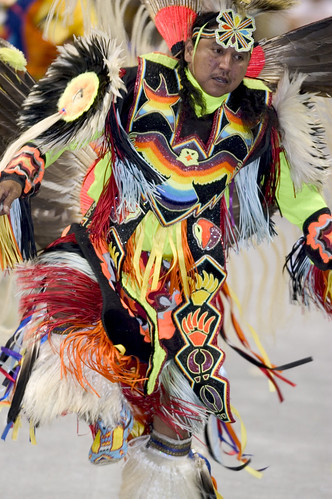Paradoxical Paradigm: Multiliteracies and Multimodalities
Introduction
The development from an oral society to a print based society demarcated the transformation of speech and thought, restructuring literacy. (Ong). Writing as a technology along with development and proliferation of multimodalities continues to challenge traditional views of literacy. With the fundamental purpose of education to “ensure that all students benefit from learning in ways that allow them to participate fully in public, community and economic life” (New London Group), one must challenge the viability of traditional educational institutions.
One of the criticism of the educational system involves the artificiality of the classroom experience. Educators decide what students should study as well as the particular skills that need to be demonstrated and create an artificial environment in which students practice those skills in isolation and out of context. This greatly contrasts with the situational, contextual environment in which learning is applied and decisions are made outside of the classroom/school environment. In an informational society, the advent of digital technologies catalyzes changes in the educational institutions, in order to prepare students for the future they will enter. Mulitliteracy and multimodalities are critical skills necessary for digital citizenship. Educational institutions remain tied to traditional codex formats in their dependence upon textbooks and other print resources despite the proliferation of digital media. Pedagogists encourage the transition to a multimodality literacy. (New London Group) A learning conversation in the Web 2.0 era “consists not only of words, but of images, video, multimedia and more” (Downes 2009). George Siemens advocates incorporating connectedness, diversity, currency and a shifting reality in order to effectuate the cataclysmic change critical to the development of 21st century literacy skills. (Siemens, 2009).
|
Traditional Literacy
|
Transformative Multimodality Literacy
|
|
Isolated Skills
|
Situated Practice
|
|
One-Dimensional
|
Cross-Disciplinary
|
|
Controlled Environment
|
Spontaneous
|
|
Text Based
|
Contextual Framework
|
|
Rigid
|
Responsive
|
The following video demonstrates the contrast between the constraints of educational institutions and real world literacies.

Stephen Downes proposes that learning occurs in communities, “where the practice of learning is the participation in the community” (Downes). This viewpoint is corroborated by recent studies conducted by the Digital Youth Project in which the traditional, formal role of education is challenged:
“Rather than thinking of public education as a burden that schools must shoulder on their own, what would it mean to think of public education as a responsibility of a more distributed network of people and institutions? And rather than assuming that education is primarily about preparing for jobs and careers, what would it mean to think of education as a process of guiding kids’ participation in public life more generally, a public life that includes social, recreational, and civic engagement? “(Ito et al).
Conclusion
Information workers need dynamic learning skills which will enable them to navigate the varied aggregate formats in which information is available in a digital age. The industrial based model by which most formal educational instruction still occurs does not prepare students for the world they will enter. “Fluent and expert use of new media requires more than simple, task-specific access to technology…” (Ito et al)
Resources
Bersin, J. (2009). Modern Corporate Training: Formalize Informal Learning. Retrieved from http://www.saba.com/resources/webcasts/documents/Saba-Bersin-Associates-Formalize-Informal-Learning-Webcast-5-09.pdf?mtcCampaign=8075&mtcEmail=12987692
Downes, S., Learning Knowledge and Connective Knowledge (2006), http://it.coe.uga.edu/itforum/paper92/paper92.html retrieved on Dec. 1, 2009.
Gee, J., & Hayes, E., Public Pedagogy Through Video Games, http://www.gamebasedlearning.org.uk/content/view/59/ retrieved on Dec 1, 2009
Ito, M., Horst, H., Bittani, M., Boyd, D., Herr-Stephenson, B., Lange, P. G., Pascoe, C. J., Robinson, L., Baumer, S., Cody, R., Mahenran, D., Martinez, K., Perkel, D., Sims, C., & Tripp, L. (2008). Living and Learning with New Media: Summary of Findings from the Digital Youth Project.http://digitalyouth.ischool.berkeley.edu/
Livingstone, D. W., and Eichler, M. (2005). Mapping The Field of Lifelong (Formal and Informal) Learning and (Paid and Unpaid) Work. Retrieved from http://wall.oise.utoronto.ca/resources/LivingstonePaper.pdf retrieved on Dec 1, 2009
Multiliteracies. (n.d.). Retrieved December 1, 2009, from http://www.decs.sa.gov.au/thenetwork/files/pages/identity_web/multiliteracies.html
New London Group. (1996). A Pedagogy of Multiliteracies: Designing Social Futures. Harvard Educational Review, 66(1), 1-33. doi: http://wwwstatic.kern.org/filer/blogWrite44ManilaWebsite/paul/articles/A_Pedagogy_of_Multiliteracies_Designing_Social_Futures.htm
Ong, W. (2002). Orality and Literacy. New York: Routledge.
Siemens, G., Connectivism, http://www.connectivism.ca/ retrieved Dec 1, 2009
Sontag, M., A Learning Theory for the Net Generation, 2008, http://is.gd/4Sjbz retrieved on Dec 1, 2009





